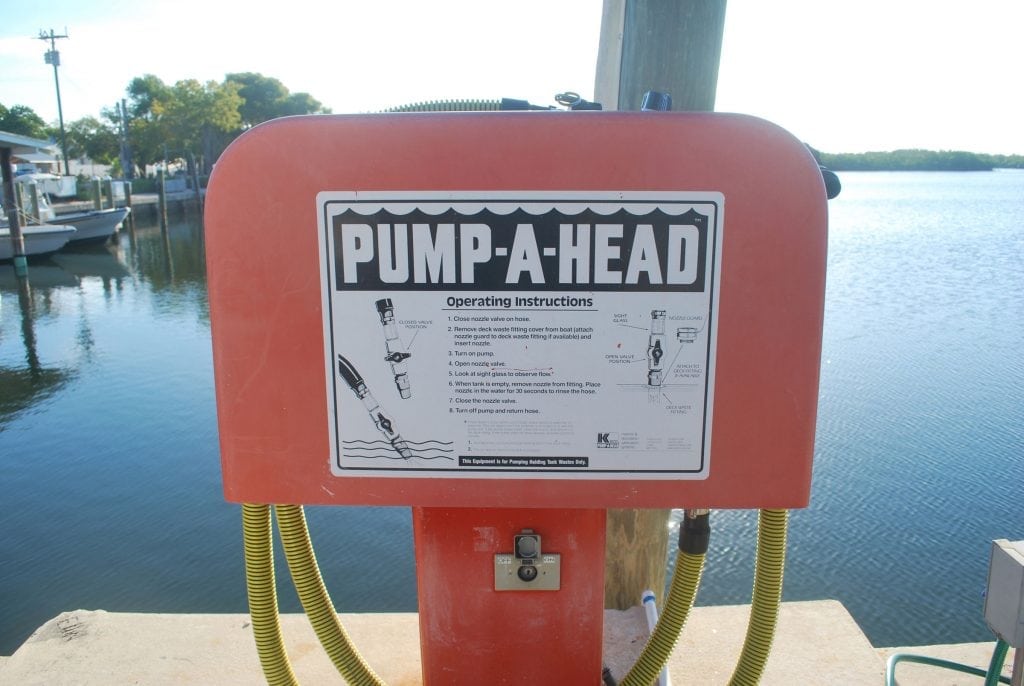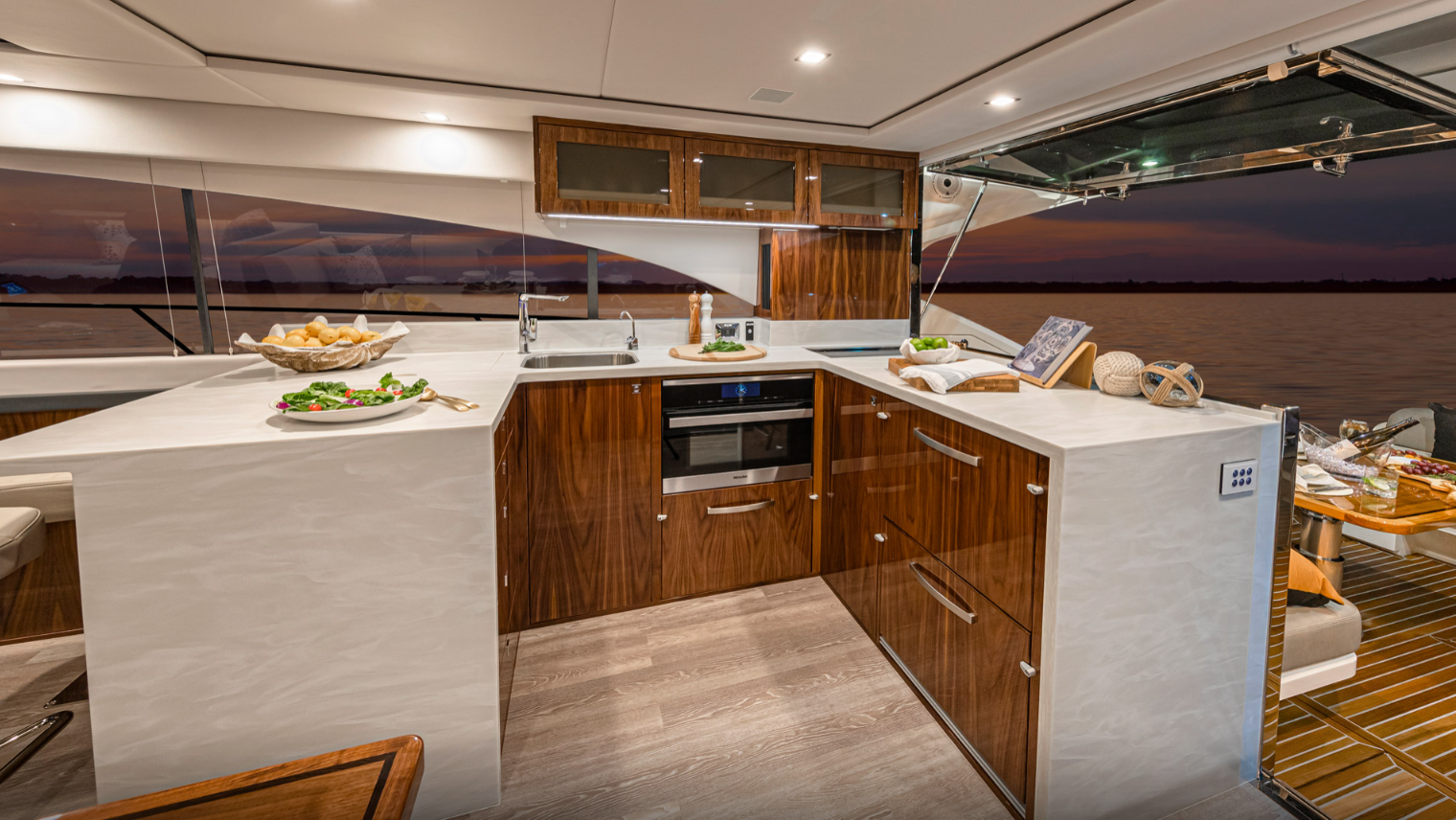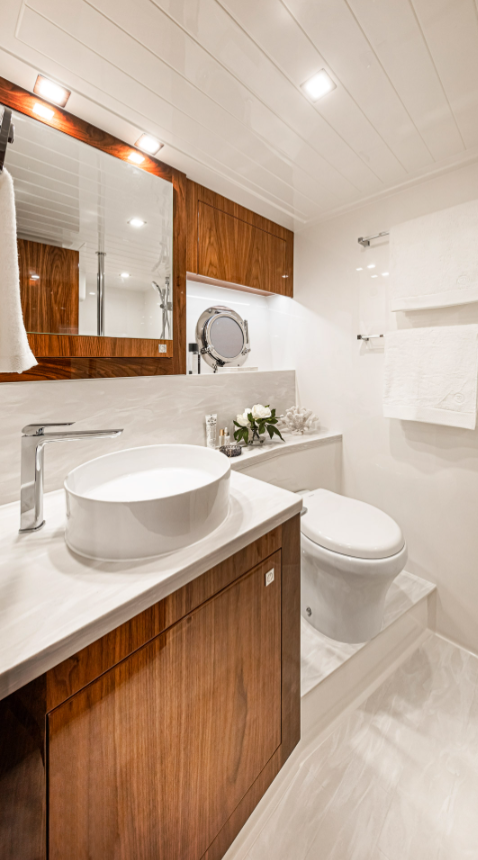Know What to do With Waste
Perhaps your annual visit to the boatyard could include the filtration or treatment of one or more of your holding tank-systems of these to keep our oceans and waterways safe and clean from boat discharge.
Color Wars
First, let’s look at gray water, which comes from the galley and shower sump. Unlike commercial vessels, recreational boats aren’t monitored or regulated for gray water discharge. That means you dump soap, shampoo, conditioner, lotion, dish detergent, shaving cream, grease, toothpaste, and phosphates into the water. Although boaters don’t need to deal with it, there are solutions to address the issue.
For example, a Wavebrite filter cleans gray water prior to discharge without the need for a gray-water holding tank. Install a filter, intelligent flow manifold, and pump between a boat’s supply drains and the overboard skin fitting. If your boatyard works with large or commercial vessels, they’ll be able to guide you on the choice of solutions.
Oil, gasoline, and lubricants can collect in the bilge of any size boat. These materials then mix with water and discharge overboard through the bilge pump, and that makes for a toxic environment. The best solution is to keep your engine well-tuned, check fuel lines and hoses regularly for leaks and drips and use an oil-absorbent pad below machinery. To go one step further, you can install an oil/water separator into the bilge discharge line. If you have a large boat, ask your yard for guidance on systems from makers such as Ingersoll Rand or Skimoil.
EPA Input
Finally, there’s the issue of black water or sewage disposal. According to the U.S. Environmental Protection Agency (EPA), the law on the discharge of black water reads “All boats operating in U.S. waters with permanently installed toilets are required by federal law to have on board a Marine Sanitation Device (MSD) that either hold human waste until it can be transferred ashore, or reduces the coliform count to such low levels that discharged sewage poses no public health hazard.”
Recreational vessels 65’ (19.81 m) and smaller may use a Type I, II or III MSD. Type I and II are “flow-through” systems that utilize a holding tank for a chemical or biological-based treatment prior to discharge, and Type III utilizes a holding tank or similar device that only allows for pump-out.
Of course, living with holding tanks can be a stinky affair that marine companies have tackled in different ways. One approach is to pump air into the tank to promote the growth of aerobic bacteria that consumes the odor-producing anaerobic bacteria. Groco’s SweetTank uses a three-watt pump that injects air into the bottom of the holding tank to lower odor. While this method doesn’t treat the sewage for discharge, it does make it easier to live with.
Raritan addressed the problem with their Electro Scan, a U.S.C.G.-approved Type I MSD that uses electrodes to convert saltwater into a bactericide. Without the use of chemicals, the treated water meets EPA standards for overboard discharge. The 12-volt system has a convenient touchpad interface, is plumbed to one or two heads, and used with electric or manual toilets.
No matter what kind, discharge water is not fun to work with, and the solutions may not be readily available at the chandlery. That’s where your boatyard comes in. The yard will know other alternatives and can take on the plumbing dirty work. Now, you don’t have to worry about what your boat is slyly shedding into our waters.


